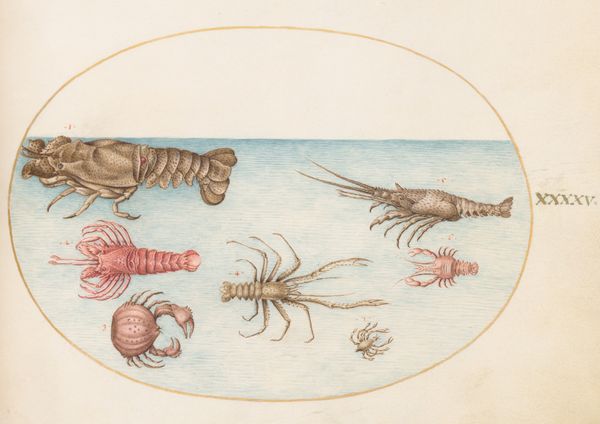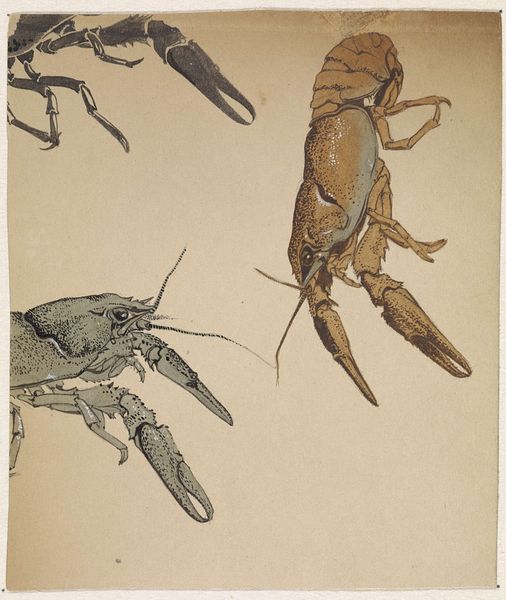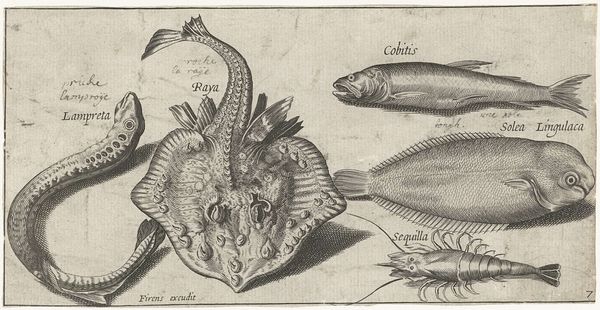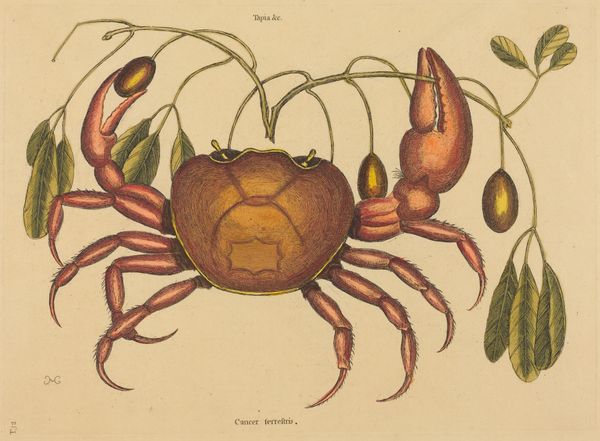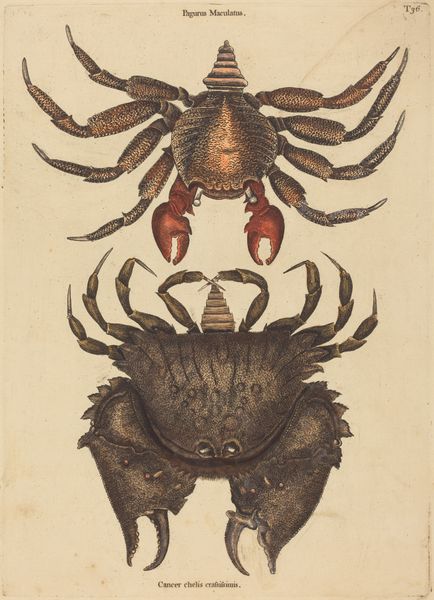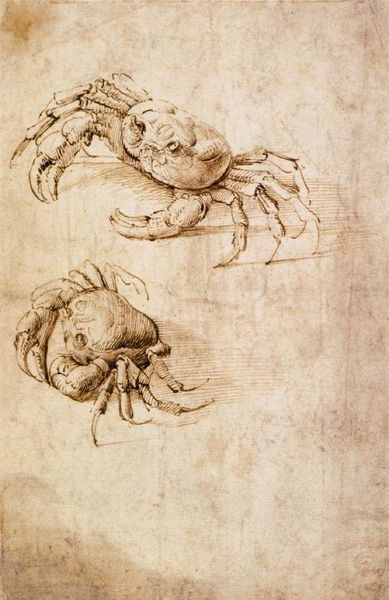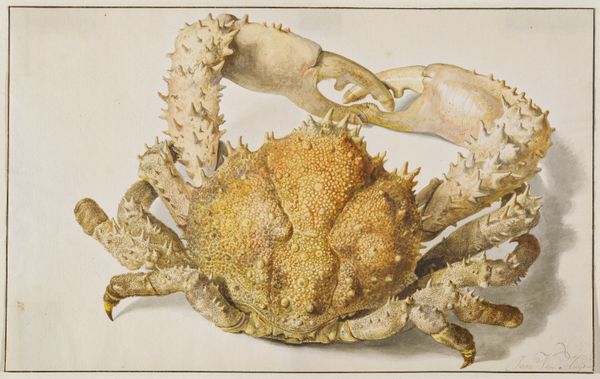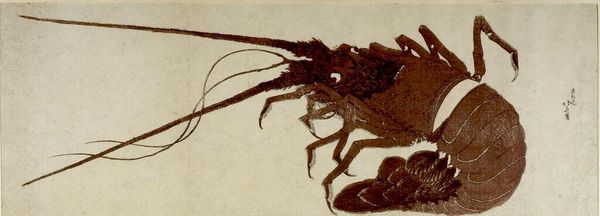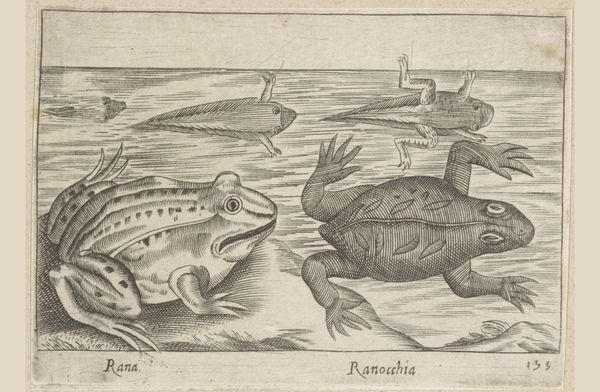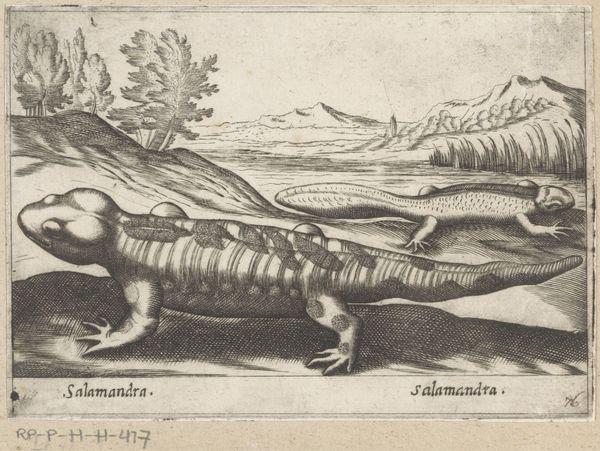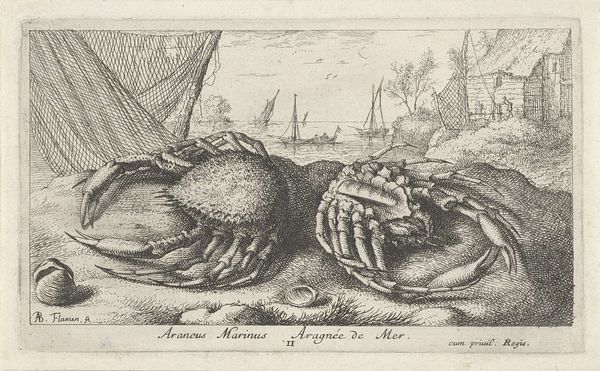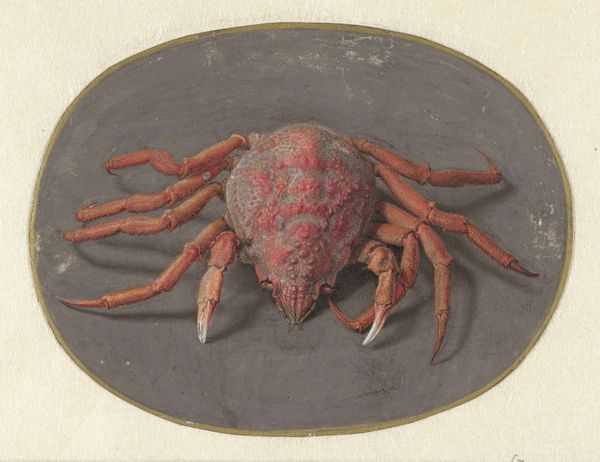
print, engraving
#
baroque
# print
#
figuration
#
engraving
#
realism
Dimensions: height 94 mm, width 187 mm
Copyright: Rijks Museum: Open Domain
Curator: Here we have "Lobster, crab, salamander and a shell," an engraving dating from sometime between 1600 and 1638 by Pierre Firens. Editor: The detail is striking! But the composition…it feels like a butcher's display. Clinical and cold. Is that intentional, do you think? Curator: The visual language of the period often intertwined the scientific with the symbolic. Note the prominence of 'Cancer' and 'Cammarus' labelled above the crab and lobster. This piece likely aimed to document the natural world, and it seems to hint at ideas about transformation, life cycles, or perhaps even the temperaments associated with astrological signs. Editor: Transformation? Interesting. Because to my eye, it’s the sheer volume of labor to produce the image that commands attention. Consider the painstaking process of engraving these minute details into a copper plate. Each line, each texture meticulously carved. It speaks to a dedicated workshop practice and market for such specialized skills. Curator: I see what you mean. Each creature does possess a distinct visual texture – the carapace of the crab, the segmented tail of the lobster. These aren't just realistic renderings; they speak to the unique characteristics associated with these beings in the cultural imagination. Shells as symbols of pilgrimage, crustaceans connected to astrological influence… it’s all woven in. Editor: But think of the sheer time investment required. The engraver wasn’t just representing symbols; he was also engaged in a kind of physical communion with his materials. This work would have been expensive and destined for educated wealthy collectors with an interest in natural philosophy. The images would become incorporated into knowledge and collecting practices that supported developing scientific classification. Curator: Ultimately, art, whether engraving or painting, allows these associations to be communicated visually across generations, ensuring symbolic longevity. Editor: It highlights the tangible aspects of artistic creation during a pivotal period when artistic and artisan production was beginning to reshape intellectual and consumer landscapes.
Comments
No comments
Be the first to comment and join the conversation on the ultimate creative platform.
